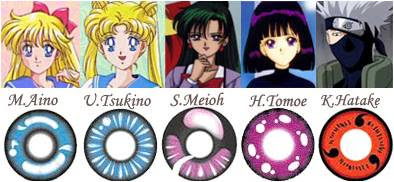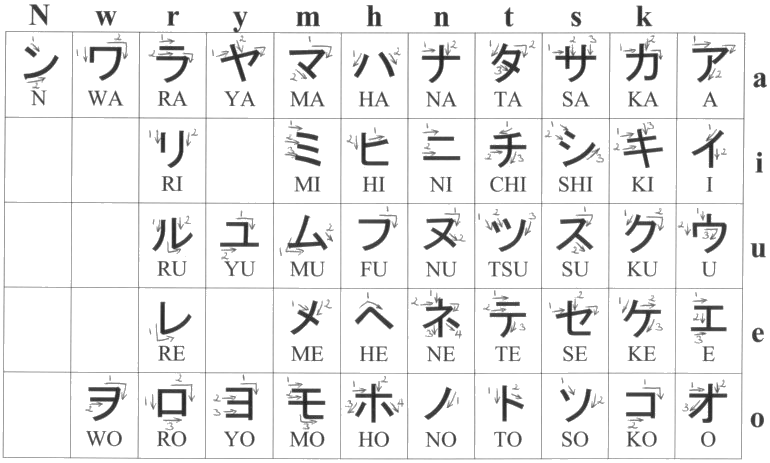I'm no expert in the Japanese language. In fact, I'm still in the process of learning it but I would like to share how I was able to take down the 2 major Japanese writing systems in a week.
Most Japanese study guides would leave out the writing systems for later. They teach Japanese with English by using romanization and lets you memorize common Japanese phrases. I have studied with such materials before and honestly, I was not able learn as much as I wanted to. I knew phrases, words, simple grammar, but it didn't feel like I'm even starting to know the language. English is my second language and as far as I can remember, before you actually learn it, you are first taught the ABC's. So why does these materials keep you from learning the Japanese "alphabet" first? It doesn't make sense to me.
I started to actually learn Japanese when I studied its scripts (
Kana); Hiragana
(ひらがな) and Katakana (
カタカナ). Why leave out learning Japanese characters for later if it is the building block of the language? First things first!

I know, the characters look daunting! But believe me, once you get the hang
of it, you'll realize how easy it is. Imagine that
you're a child who is just starting to learn the alphabet. Forget English and learn Japanese!
Hiragana and Katakana are 2 sets of Japanese characters. Both have characters equivalent to each other and pertains to the same sound. Hiragana is the basic script used to write native words while Katakana is used for loan or foreign words and onomatopoeia. There is also the Kanji which are Chinese characters used along with Hiragana and Katakana but I won't be talking about it for now.
I would highly recommend to study Hiragana first. I found it a lot easier to learn than Katakana. Even the Japanese children learn it first so why not learn Japanese the Japanese way?
HIRAGANA (ひらがな)
The Hiragana consists of 48 characters (not including the voiced consonants and the combination sounds). The table below shows the order of characters and the correct stroke in writing each character.

It is really important to learn the correct stroke in writing characters
because some characters look very similar and the stroke can help you
in distinguishing them.
There are so many online sources in learning Hiragana but nothing beats actually writing them with pen and paper. Here is a link to a printable Hiragana writing sheet I personally used. You should also learn the correct pronunciation of each character as you go along with writing them. Tokyowithkids.com will help you with that. Listen to each sound and pronounce it as you write the character on the trace sheet. Make sure to say each sound with the right pronunciation. This will help you A LOT in getting rid of the foreign accent you may have when you actually start speaking the language.
KATAKANA (カタカナ)
Katakana is composed of 48 characters just like Hiragana. They look more "boxy" and I found it a bit tougher to master.
It may take a couple of tries to make your "character" look like the actual character but don't be afraid in making mistakes. Mistakes are part of learning and I think that committing mistakes makes remembering easier. We never make the same mistake twice don't we? Or maybe we do. But it doesn't matter.
I'm not a superhuman and I did not learn the Kana in one day. My pace was 15 characters on the first
day which constantly increased in the next few days. You'll have your
own pace as you start. Don't be discouraged if you're not going fast
enough. Take your time in mastering each character and enjoy the whole
learning process. After learning a new character, always rewrite all the
characters you have learned in a similar manner as the tables above (Up-down, right to left).
There are times that you'll forget some characters but it's OK. Forgetting is natural unless of course you're endowed with an amazing savant memory ability. On the other hand, I found mnemonics as the key in resolving this problem. I thought of my own mnemonic for characters I usually forgot. The things that I came up with myself had more retaining power, so I suggest that you try making your own mnemonics too. If, in any case, this does not work for you, don't stress yourself out. There are so many images in the
web which can help you.
The key to mastery is practice. Practice everyday, in any given time. Write characters with your fingers in the air while walking, write them on water while you bathe, practice, practice, practice! There are also so many great Kana learning apps out there. Go and download one. Try reading Japanese texts. You may not be familiar with all the characters you encounter yet because of the Kanji but doing so gives you a lot of practice in reading and a great feeling of fulfillment too.
Note: Katakana and Hiragana characters may look slightly different when they are in the computer or other devices but don't worry, you'll surely recognize them. Don't copy the way you see the characters in your screens. Keep writing them as they should be written.
Good luck and have fun learning Nihongo
(日本語).
がんばって!
Do your best!
♥
Disclaimer: This is the technique I used in
learning Hiragana and Katakana. Every person have their own learning
style. This may or may not work for you.



















































